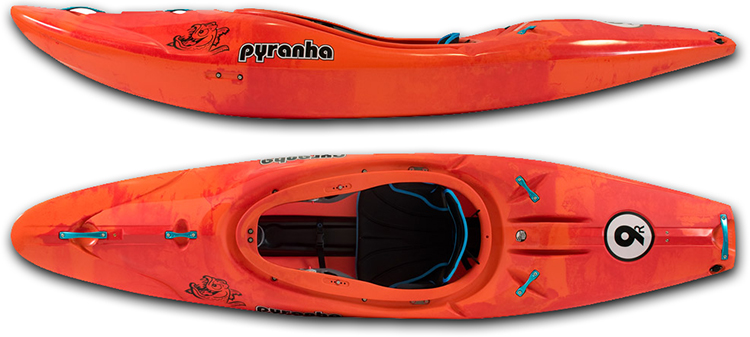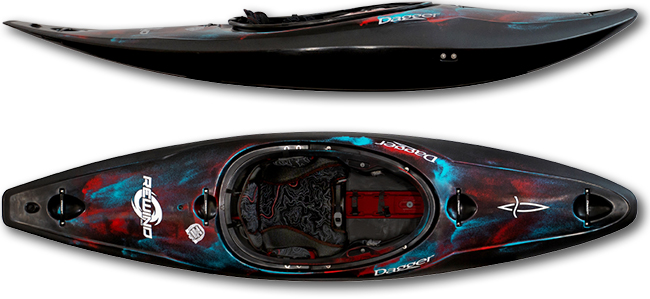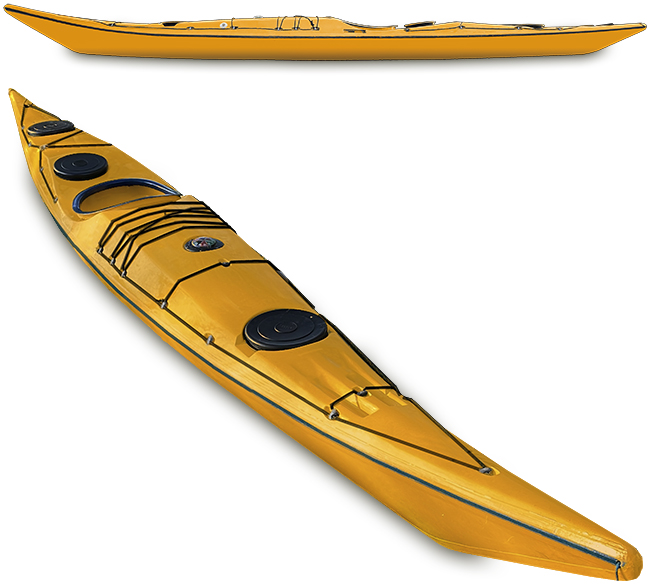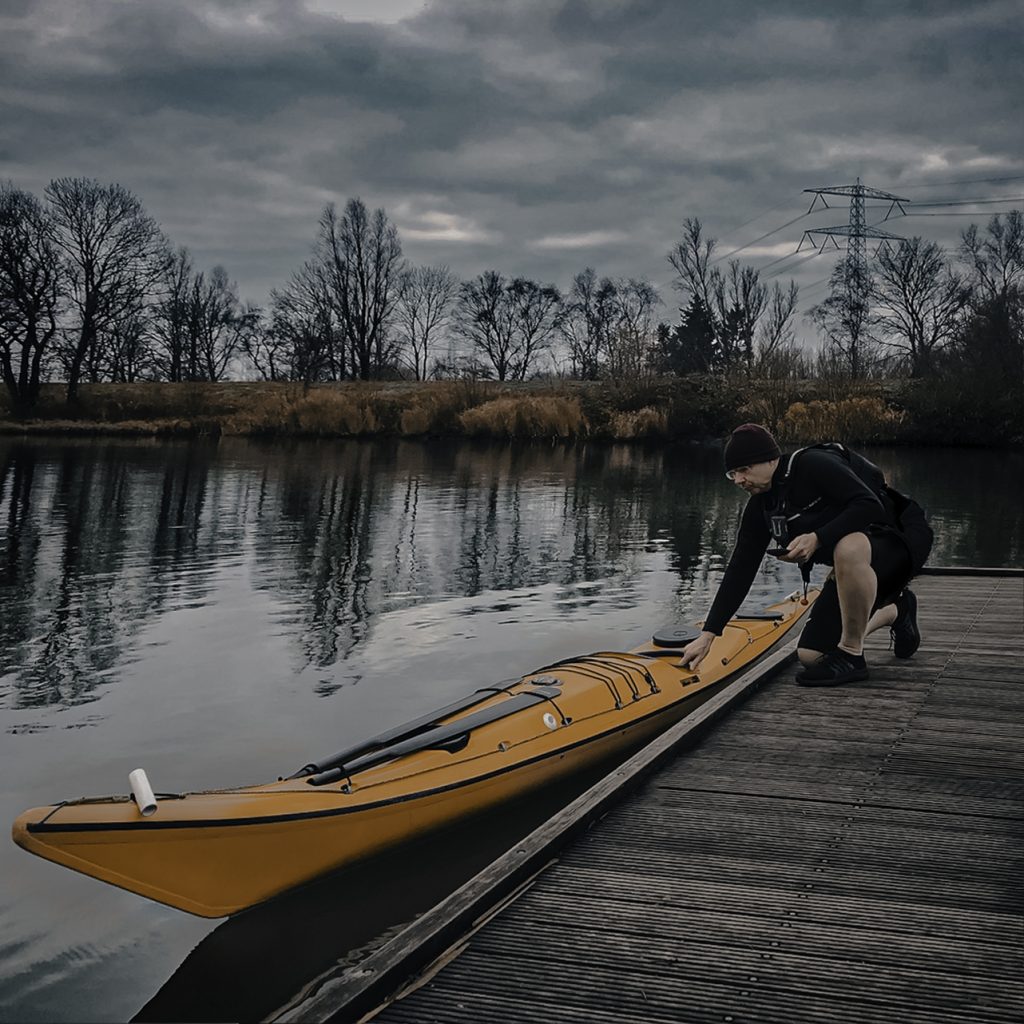‘One of the loneliest places one can be is in the slow drift leading into a stiff rapid. The quiet and calm, the river’s current compressing and picking up speed, and the roaring sound coming from a horizon line falling away in the near distance. No place for doubt. This is what defines a whitewater paddler.’
My Kayaks
I am a Non Pro Boater, 184 cm tall, weighing 90+ kg and 62 years old. Like many kayakers of my generation with a slalom background, I prefer half slice kayaks as a play boat and on technical water. But, having lost some of my strength, agility and response capability for river running; on bigger and more dairing powerful water I prefer a more bulky and steady boat.
Pyranha 9R II, my creeker.
‘Creeking generally involves higher gradient and is likely to include running ledges, slides, and waterfalls on relatively small and tight rivers.‘
So, having lost some of my strength, agility and response capability, on bigger and more dairing, powerful water I prefer a more bulky and steady boat. I really like my Pyranha the 9R II.
I chose the 9R II, because of it’s need for speed. It has loads of volume, progressive rocker and turns on a dime.

I opted for the large sized 9R II, 287cm long, partly for overnighting, but mostly because I like it’s behaviour better. This boat is nimble, it’ll turn on the spot. It doesn’t have the stern rocker that some boats do, so it tail-tap, but since I don’t often boof from ledges, I don’t care. This is a boat that asks you to keep the speed up. It has a dramatic, up-turned bow. This bow rocker results in a ton of bow lift. The stern width and volume helps keeping the boat level when coming out of holes and landing drops. The somewhat pronounced chine edge in the center of the boat helps to whip into an eddy or hold a line when charging through turbulent water. The 9R is susceptive to diagonal seems in the water. Due to the design of the boat, edging requires getting to know it, but it will reward you by offering loads of control. The characteristics of the 9R II Large compared to the medium, with my weight, perform better with regards to being sensitive to side-water at lower speeds. A more comfortable feeling. This an awesome kayak!

See the Pyranha 9R II in the surf!
![]()
Supplied by Kanocentrum Arjan Bloem.
Dagger Rewind, my river runner.
‘Riverrunning is the essential form of kayaking, is not about pushing the levels of difficulty. Riverrunning is about playful exploration of every element differential forces in the river’s currents.‘
If you are looking for slice and speed in a whitewater kayak, the Dagger Rewind is a great choice. This whitewater kayak offers a full volume bow and a low volume stern that makes it easy to get vertical on stern squirts and splats. When it comes to slicy river running kayaks, the Rewind is at the top of the food chain.

The Dagger Rewind has a planing hull rocker profile, making it ride up and over larger hydraulic features with ease. The sleek design is also fast and responsive while still feeling “forgiving enough”. Boofing the Rewind is super easy with the high-rise bow that quickly clears the drop and helps it to rise fast on rock-assist boofs. The stern has just enough volume and length to make it feel like a true river runner, but easy enough to bury in a squirt or pivot turn when you want to. The Rewind surfs short steeper features well by keeping the bow from pearling. The tapered edge profile starts at the bow, gets strongest right under the seat, then fades away at the very end of the stern, giving it a responsive feel. Initial and secondary stability seem to be spot on, stable and easy to roll. Its a really good design. And you can’t beat the Contour Ergo outfitting, with its ease of adjustability and immediate step-in comfort, and the Step-Out Safety Pillar. The low volume stern is just begging to be plunged underwater and is designed to allow the paddler to do stern squirts and get vertical on even the weakest eddy line. Lots of rocker. The extra volume in the bow feels extremely buoyant and resurfaces quickly. An awesome boat!

See the Dagger Rewind in action!
![]()
Supplied by Kanocentrum Arjan Bloem.
KSU Noctiluca Expedition, my big water boat.

My KSU Noctiluca Expedition, made to navigate the seas. Able to stow loads of gear.
- Length x Width: 505 x 54 cm
- Weight: 23 kg
- Snug ocean cockpit 36,5 x 49,5 cm
- Retractable (Internal) Skeg
- Suunto build in Compass
- Internal Bilge Footpump
- Three waterproof compartments
- 2 Sunken Paddle Slots in bowdeck
